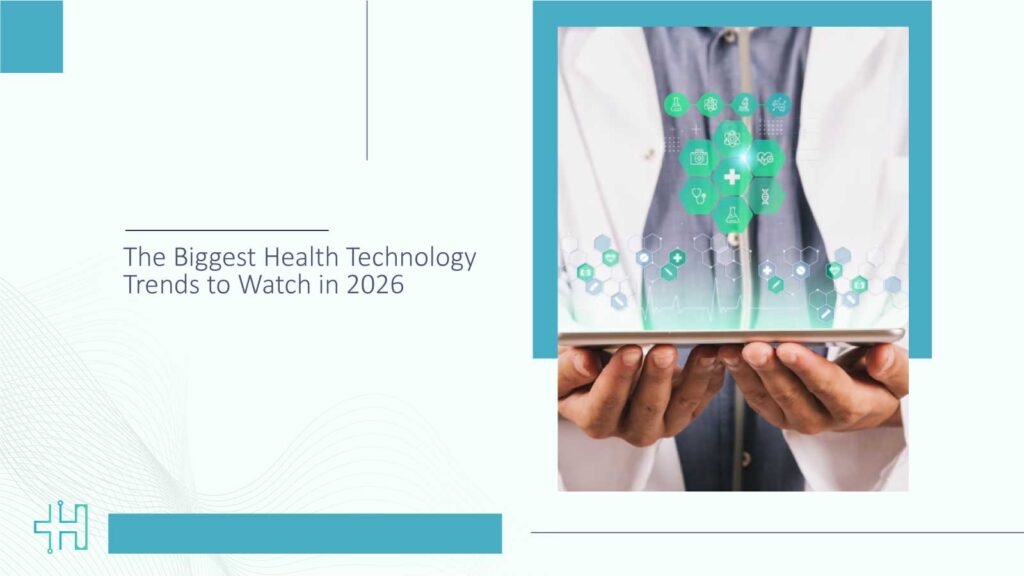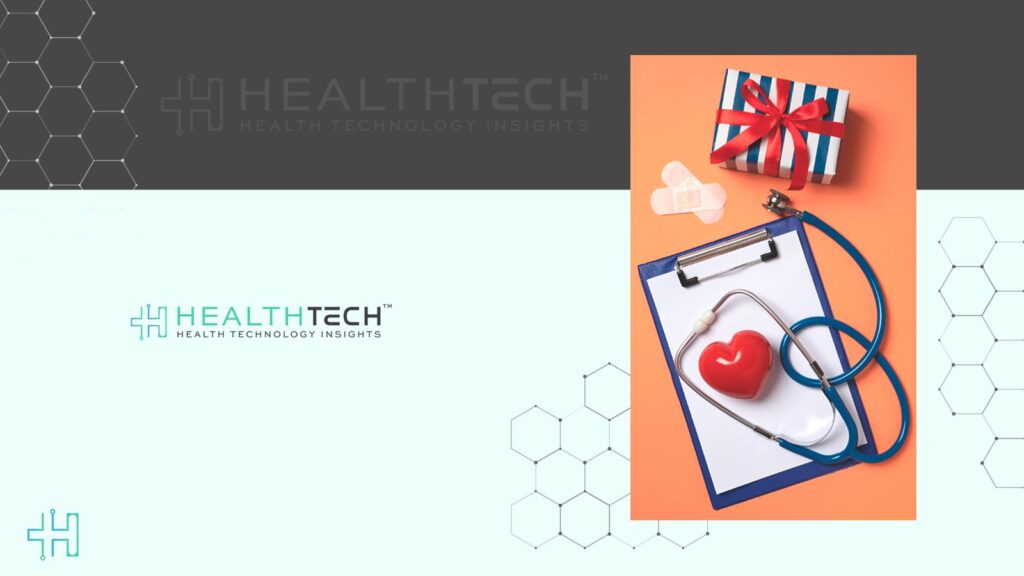Imagine walking into a hospital floor in 2026 and seeing an AI assistant reviewing imaging scans, smart wearable rings relaying real-time health data, and remote treatment sessions being managed across continents. This article will bring you the five biggest health technology trends to keep on your radar in 2026. You’ll walk away with practical insight, key data points, and real-world contexts to guide decision-making.
1. Generative AI & agent-based care models
One of the most seismic shifts is the rise of generative AI: systems that don’t just assist clinicians, they begin to act as intelligent agents. According to Forbes, “8 Breakthrough Technology Trends That Will Transform Healthcare in 2026,” generative AI in drug discovery and AI agents in healthcare sit at the top of the agenda.
Here’s what to watch:
- In diagnostics and treatment planning, AI will move from “suggestion” to “first-draft” mode, reviewing imaging, proposing protocols, and flagging patient risk.
- For providers, this means shifting from “who typed the note” to “who reviewed the AI output”. This leads to new roles in governance, ethics, and algorithm-validation.
- A global survey by Willis Towers Watson found the average global medical cost trend in 2026 projected at 10.3 %. That kind of inflation pressure is driving the AI conversation decisively.
2. Telehealth 2.0 & hybrid care ecosystems
Telehealth exploded during the pandemic, but what comes next is not more of the same. We’re entering Telehealth 2.0: mature, hybrid, integrated care models that blend virtual and in-person seamlessly.
Key aspects:
- Virtual visits become standard, not a variant. Telehealth is embedded in care pathways for mental health, dermatology, and chronic disease.
- Wearables, home-monitoring, and AI-driven triage feed into both virtual and physical care.
- For decision-makers: This means taking a holistic view of patient journeys across channels, not just building video-visit capability.
- Imagine triage done while you commute, and a specialist consultation that already knows your metrics before you speak.

3. Wearables, home-monitoring, and the rise of personalised data
From smart watches to rings to implanted sensors, the home becomes a monitoring hub, and the data flows into care systems. A recent survey of wearable health technologies frames this shift as moving from “wellness gadgets” to clinical-grade data streams.
Highlights:
- The grey zone between wellness and medical devices is dissolving; wearables formerly for steps are now for arrhythmia detection, sleep-apnea flags, and more.
- Organisations need frameworks for data governance, privacy, and workflow integration.
- The takeaway: If you’re thinking of wearables as nice-to-have, reframe them as foundational to tomorrow’s care model.
4. Data interoperability, edge computing & resilient ecosystems
Technology trends don’t land in a vacuum; they depend on infrastructure, data pipelines, and resilient systems.
According to the “Tech Trends 2026” report from InfoTech Research Group, themes such as “Smart Sensing Networks” and “Federated Data Governance” define where investment is going.
In health-tech terms, that means:
- Edge computing in hospitals, clinics, and home settings so that latency doesn’t delay critical care decisions.
- Federated data governance, so that patient data stays local yet contributes to larger insights, without violating privacy or regulation.
- Interoperability beyond HL7/FHIR: sensors, wearables, EMRs, patient apps all speaking the same language.
- A story: One CISO told me that when a sensor network tripped in a pandemic-era surge unit, the edge system kept local analytics alive even when the central cloud connection went down, avoiding downtime in monitoring.
5. Digital Therapeutics, Immersive Care & Next-Gen Devices
Finally, we’re seeing the acceleration of technologies that blur the line between device, drug, and digital-care platform. From immersive VR training to digital therapeutics (software-based interventions) to advanced robotics in the OR, the shape of care delivery is evolving.
For instance:
- Digital therapeutics apps that treat behavioural health, chronic conditions, and support lifestyle interventions.
- VR/AR is used for provider training, patient rehabilitation, and even remote guidance during surgery.
- Robotics and automation in care delivery, cleaning, and logistics within hospitals. If your innovation pipeline still treats devices, apps, and data as separate, you’ll be outpaced by ecosystems that merge them.
Your Organisation’s Path to Resilient Digital Health
We’re at a juncture. The year 2026 won’t look like today, and not only because the tech will improve. The healthcare ecosystem, regulation, consumer expectations, and orchestration between systems will shift.
Take these trends not as a checklist but as a framework: generative AI, hybrid care, personalised monitoring, resilient data infrastructure, and digital-tech devices. Start mapping where your organisation sits today, where the gaps are, and where the accelerators lie. Let’s embrace it together: purposefully, thoughtfully, and with strategic intent.
FAQs
1. What is generative AI in healthcare, and why is it important in 2026?
Generative AI refers to algorithms that create new content or recommendations, rather than simply analysing existing data. In 2026, it matters because it shifts the role of AI from assistant to collaborator, enabling faster decision-making, greater scalability, and new models of care.
2. How will Telehealth 2.0 differ from what we saw during the pandemic?
Telehealth 2.0 moves away from “video as backup” toward fully integrated virtual-in-person ecosystems. It means combining remote-monitoring, outcomesdata, workflows that span home and clinic, and embedding telehealth in standard care rather than as a stopgap.
3. Are wearable devices really going to become clinical-grade?
Yes. Many wearables began in wellness, but are now generating data that providers can act on. The trend is toward devices with higher accuracy, connectivity to care systems, and meaningful insights for clinicians, not just step-counts for patients.
4. What does “federated data governance” mean in a health-tech context?
In simple terms, it’s a way of managing data so that it remains local (for privacy/compliance) yet contributes to broader analytics. Instead of centralising all patient data, federated systems allow insights and models while respecting ownership and control, crucial for large health networks in 2026.
5. How should health-tech decision-makers prioritise investment across these trends?
Start with the patient journey and the data backbone. Prioritise use-cases where tech clearly intersects value. Build infrastructure (edge, interoperability) that supports future growth. Then layer in generative AI, immersive devices, and hybrid care.
Dive deeper into the future of healthcare.
Keep reading on Health Technology Insights.
To participate in our interviews, please write to our HealthTech Media Room at sudipto@intentamplify.com




